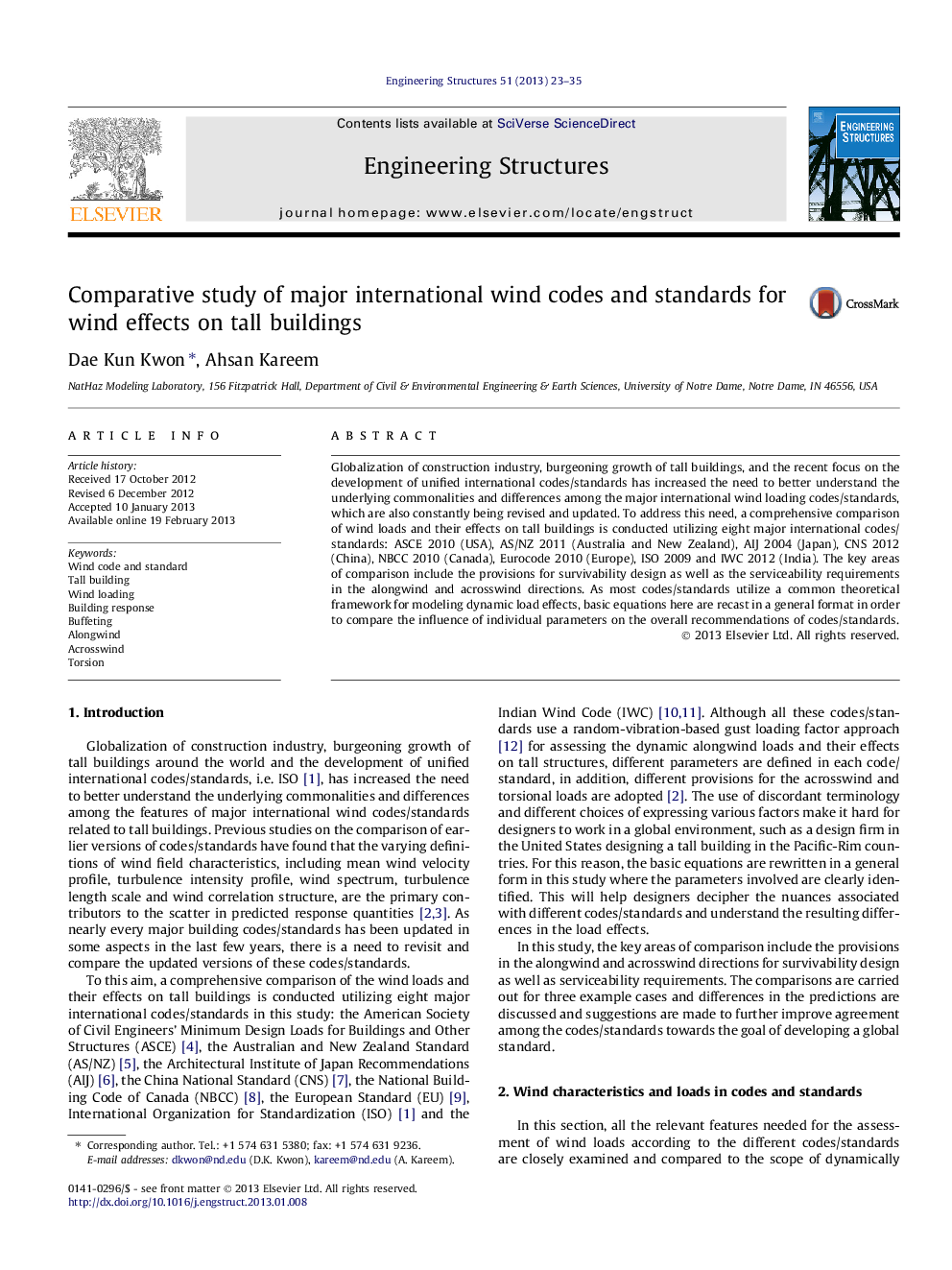| Article ID | Journal | Published Year | Pages | File Type |
|---|---|---|---|---|
| 266995 | Engineering Structures | 2013 | 13 Pages |
Globalization of construction industry, burgeoning growth of tall buildings, and the recent focus on the development of unified international codes/standards has increased the need to better understand the underlying commonalities and differences among the major international wind loading codes/standards, which are also constantly being revised and updated. To address this need, a comprehensive comparison of wind loads and their effects on tall buildings is conducted utilizing eight major international codes/standards: ASCE 2010 (USA), AS/NZ 2011 (Australia and New Zealand), AIJ 2004 (Japan), CNS 2012 (China), NBCC 2010 (Canada), Eurocode 2010 (Europe), ISO 2009 and IWC 2012 (India). The key areas of comparison include the provisions for survivability design as well as the serviceability requirements in the alongwind and acrosswind directions. As most codes/standards utilize a common theoretical framework for modeling dynamic load effects, basic equations here are recast in a general format in order to compare the influence of individual parameters on the overall recommendations of codes/standards.
► Major international wind codes and standards on tall buildings are compared. ► Survivability/serviceability in alongwind and acrosswind directions are investigated. ► Basic equations are recast in a general format to compare various parameters. ► Overall loads are reasonably consistent in alongwind but more scattered in acrosswind. ► Velocity profile is the primary cause for overall load discrepancies among standards.
